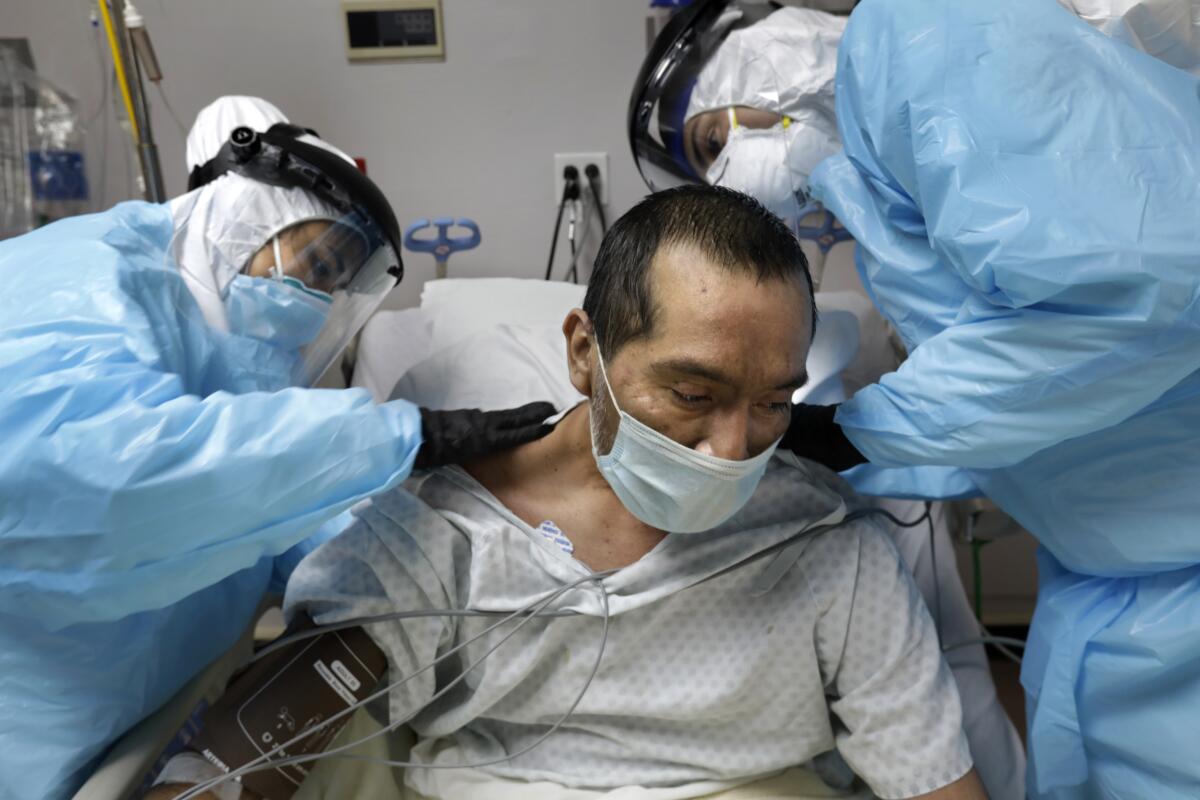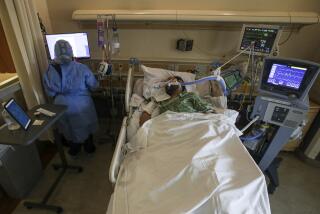Six charts show how Americans have been affected by COVID-19

- Share via
The novel coronavirus has infected more than 2 million Americans since it arrived on U.S. shores in January, and more than 100,000 of them have died of COVID-19. A new report from the Centers for Disease Control and Prevention offers the most comprehensive look to date at how Americans have been affected by the virus.
The analysis is based on more than 1.3 million patients who became sick in the U.S. between Jan. 22 and May 30. These patients came from all 50 states and the District of Columbia. All of their infections were confirmed with laboratory tests that look for the virus’s RNA.
As of May 30, there were 403.6 cases of COVID-19 for every 100,000 people in the U.S. Women and girls had a slightly higher incidence (406 cases per 100,000) than men and boys (401.1 cases per 100,000).
The number of new cases per day reached its peak on April 12, when 31,994 people had their coronavirus infections confirmed. COVID-19 deaths peaked nine days later on April 21, when 2,856 people died. (Both figures are seven-day moving averages, which incorporate data from the current day and the previous six days to smooth out expected spikes and dips.)
By May 30, the number of new cases per day had dropped to 19,913, and daily deaths were down to 950.
As seen previously, the risk of infection increased with age. There were 51.1 cases per 100,000 children under 10, compared with 902 cases per 100,000 adults who were 80 or older. However, the incidence was higher for U.S. residents in their 40s and 50s than for those in their 60s and 70s.
Only 45% of the cases in the sample included data on the race and ethnicity of patients. With data missing for more than half of the patients, the report authors were not able to perform detailed analysis of racial and ethnic disparities.
But what they did have showed that Latinos and Black people “are disproportionately affected by the COVID-19 pandemic.” Latinos make up 18% of U.S. residents, but they account for 33% of cases reported so far. Similarly, Black people represent 13% of the population but account for 22% of reported cases.
In addition, 0.7% of the population is Native American or Native Alaskan, yet 1.3% of reported cases have affected them.
Among the 47% of patients whose symptoms were reported, 7 out of 10 had at least one of the core symptoms of COVID-19: fever, cough or shortness of breath.
Overall, the most common single symptom was a cough (50.3%), followed by fever (43.1). More than one-third of patients reported muscle aches and pain (36.1%) and headache (34.4%).
Stunning visualizations show what the novel coronavirus, SARS-CoV-2, looks like at an atomic level of detail.
Another 4% of cases were asymptomatic. The true proportion of asymptomatic cases is probably much higher, but since people without symptoms aren’t likely to get tested, their actual incidence is difficult to gauge, the report authors wrote. The people in this report were likely tested because they were identified through contact tracing, the authors added.
Information about whether patients died or recovered was available for 36% of the cases, and among those who died, information about underlying health conditions was available for 57% of cases.
The overall death rate for Americans of all ages and both sexes was 5.4%, with men (6%) more likely to die than women (4.8%).
Coronavirus infections were 12 times more deadly in patients with underlying health conditions than in patients without them. Among patients who were healthy before they encountered the virus, 1.6% died of COVID-19. But among those who had cardiovascular disease, diabetes, chronic lung infections or other ailments, 19.5% of infections resulted in death.
The older COVID-19 patients were, the more likely they were to be hospitalized. Overall, 14% of the patients for whom hospitalization status was known were admitted for treatment. Men and boys (15.6%) were more likely to be admitted than women and girls (12.4%).
The risk of being hospitalized was six times higher for patients with underlying health conditions (45.4%) than for patients without them (7.6%).
But the older patients were, the smaller the gap. Among patients in their 70s, for instance, 64.7% of those with preexisting conditions were hospitalized, compared with 27.9% of those who were healthy before their infections. Among patients who were at least 80, 62.3% of those with underlying health conditions were hospitalized, compared with 30.1% of those without them.
The trends were similar for the 2.3% of patients who were admitted to intensive care units. Men and boys (2.8%) were more likely to wind up in the ICU than women and girls (1.7%).
Among patients with underlying health conditions, 8.5% were admitted to an ICU; among patients without such conditions, 1.5% were treated in an ICU. As with total hospitalizations, that gap narrowed with age.
The findings were published Monday in the CDC’s Morbidity and Mortality Weekly Report.







